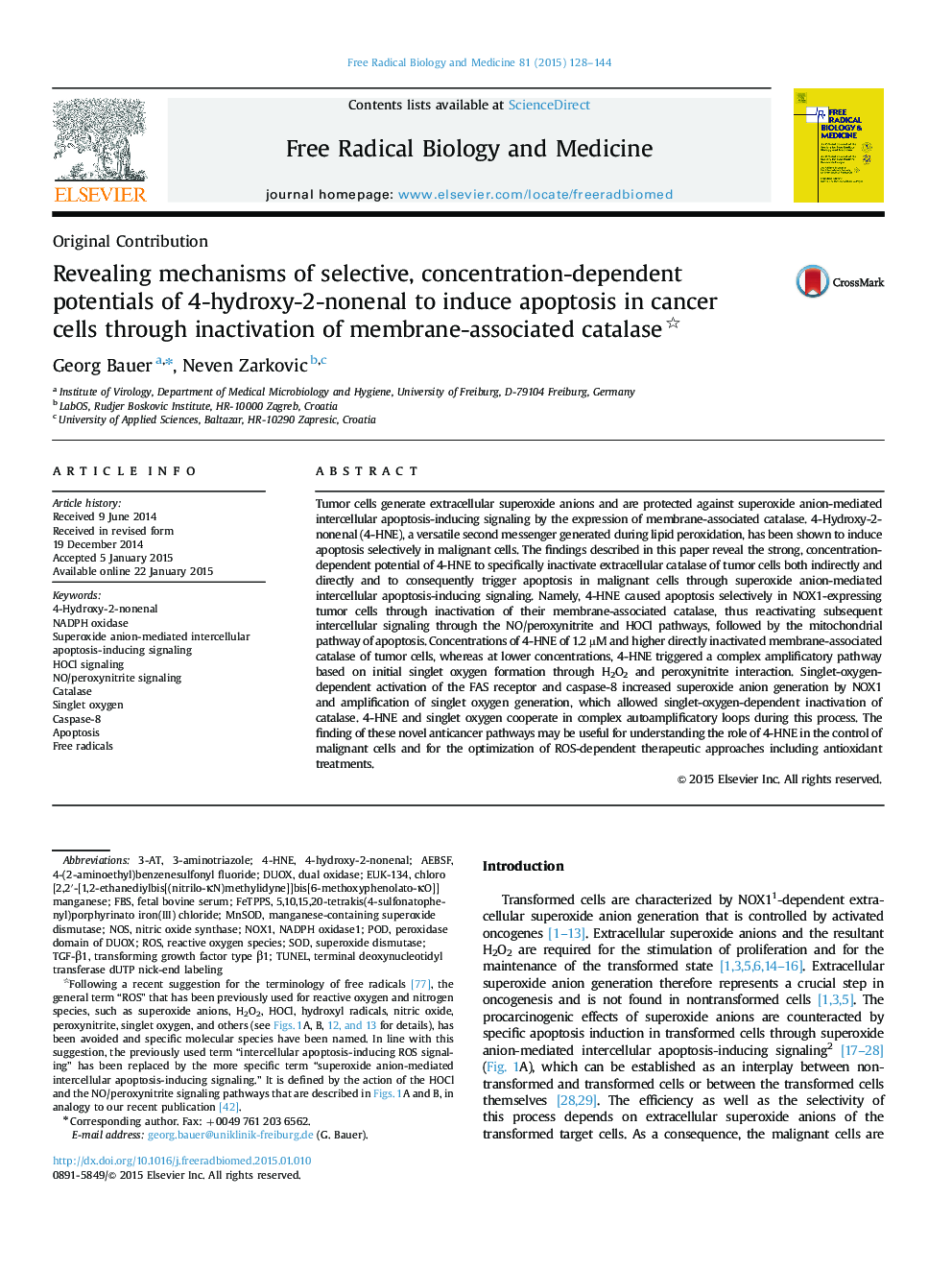| کد مقاله | کد نشریه | سال انتشار | مقاله انگلیسی | نسخه تمام متن |
|---|---|---|---|---|
| 1907824 | 1534961 | 2015 | 17 صفحه PDF | دانلود رایگان |

• High concentrations of 4-HNE directly inactivate membrane-associated catalase of tumor cells.
• Low concentrations of 4-HNE lead to catalase inactivation via autoamplificatory mechanisms based on singlet oxygen formation from tumor cell-derived H2O2 and peroxynitrite.
• Due to catalase inactivation, superoxide anion-mediated intercellular apoptosis-inducing signaling causes selective apoptosis induction in the tumor cells.
• These findings reveal a novel mechanism of selective anticancer effects of 4-HNE.
Tumor cells generate extracellular superoxide anions and are protected against superoxide anion-mediated intercellular apoptosis-inducing signaling by the expression of membrane-associated catalase. 4-Hydroxy-2-nonenal (4-HNE), a versatile second messenger generated during lipid peroxidation, has been shown to induce apoptosis selectively in malignant cells. The findings described in this paper reveal the strong, concentration-dependent potential of 4-HNE to specifically inactivate extracellular catalase of tumor cells both indirectly and directly and to consequently trigger apoptosis in malignant cells through superoxide anion-mediated intercellular apoptosis-inducing signaling. Namely, 4-HNE caused apoptosis selectively in NOX1-expressing tumor cells through inactivation of their membrane-associated catalase, thus reactivating subsequent intercellular signaling through the NO/peroxynitrite and HOCl pathways, followed by the mitochondrial pathway of apoptosis. Concentrations of 4-HNE of 1.2 µM and higher directly inactivated membrane-associated catalase of tumor cells, whereas at lower concentrations, 4-HNE triggered a complex amplificatory pathway based on initial singlet oxygen formation through H2O2 and peroxynitrite interaction. Singlet-oxygen-dependent activation of the FAS receptor and caspase-8 increased superoxide anion generation by NOX1 and amplification of singlet oxygen generation, which allowed singlet-oxygen-dependent inactivation of catalase. 4-HNE and singlet oxygen cooperate in complex autoamplificatory loops during this process. The finding of these novel anticancer pathways may be useful for understanding the role of 4-HNE in the control of malignant cells and for the optimization of ROS-dependent therapeutic approaches including antioxidant treatments.
Figure optionsDownload high-quality image (146 K)Download as PowerPoint slide
Journal: Free Radical Biology and Medicine - Volume 81, April 2015, Pages 128–144